Themed collection The Cambridge Structural Database - A wealth of knowledge gained from a million structures

Introduction to the Cambridge Structural Database – a wealth of knowledge gained from a million structures
Suzanna Ward and Ghazala Sadiq introduce the CrystEngComm themed issue on the Cambridge Structural Database – a wealth of knowledge gained from a million structures.

CrystEngComm, 2020,22, 7143-7144
https://doi.org/10.1039/D0CE90154G
Enabling efficient exploration of metal–organic frameworks in the Cambridge Structural Database
A tutorial review for mining the ever growing number of metal–organic frameworks data in the Cambridge Structural Database, for MOF scientists of all backgrounds.
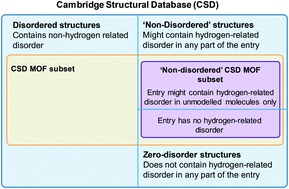
CrystEngComm, 2020,22, 7152-7161
https://doi.org/10.1039/D0CE00299B
Identifying intermolecular atom⋯atom interactions that are not just bonding but also competitive
This highlight criticises the QTAIM method and discusses algorithms for identifying intermolecular interactions that are both bonding and competitive.
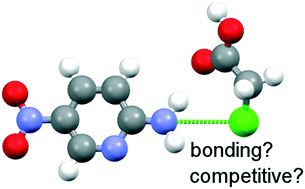
CrystEngComm, 2020,22, 7145-7151
https://doi.org/10.1039/D0CE00270D
Structural analysis of metastable pharmaceutical loratadine form II, by 3D electron diffraction and DFT+D energy minimisation
Coupling 3D electron diffraction and density functional theory provided the metastable pharmaceutical crystal structure within nanometre range, under ambient conditions.
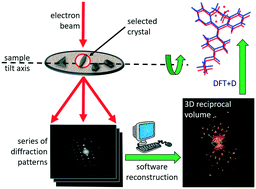
CrystEngComm, 2020,22, 7490-7499
https://doi.org/10.1039/D0CE01216E
From structure to crystallisation and pharmaceutical manufacturing: the CSD in CMAC workflows
Two workflows are presented that are relevant to the design and construction of end-to-end pharmaceutical manufacturing processes.

CrystEngComm, 2020,22, 7475-7489
https://doi.org/10.1039/D0CE00898B
Optimization and comparison of statistical tools for the prediction of multicomponent forms of a molecule: the antiretroviral nevirapine as a case study
A methodology is proposed to assess the propensity to obtain multicomponent forms of an API based on the combination of modified statistical analytical tools to order the possible co-formers in a ranking index.
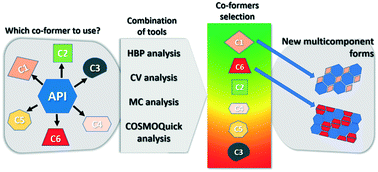
CrystEngComm, 2020,22, 7460-7474
https://doi.org/10.1039/D0CE00948B
Can solvated intermediates inform us about nucleation pathways? The case of β-pABA
Using crystallography to search for nucleation pathways: α and β polymorphs of p-aminobenzoic acid.
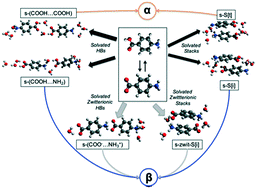
CrystEngComm, 2020,22, 7447-7459
https://doi.org/10.1039/D0CE00970A
Same or different – that is the question: identification of crystal forms from crystal structure data
An analysis of the CSD with structural comparison tools shows that differentiating between polymorphism and redeterminations is not always straight forward and requires of complementary tools at the hands of an expert practitioner.
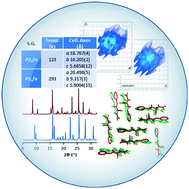
CrystEngComm, 2020,22, 7170-7185
https://doi.org/10.1039/D0CE00724B
Fast energy minimization of the CCDC drug-subset structures by molecule-in-cluster computations allows independent structure validation and model completion
Optimizing structures with computations on clusters of molecules permits generation of structure-specific restraints for refinement and structure validation.
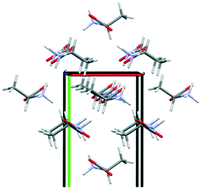
CrystEngComm, 2020,22, 7420-7431
https://doi.org/10.1039/D0CE00488J
Disappearing disorder
Disorder in crystal structures can disappear, depending on the circumstances, as shown by multi-temperature measurements, aspherical-atom refinement and computational analyses.
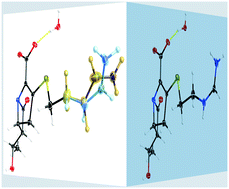
CrystEngComm, 2020,22, 7432-7446
https://doi.org/10.1039/D0CE00300J
Ring stacking and laddering in ammonium carboxylate salts: extension to secondary ammonium salts
A combined CSD and experimental study shows that the ring stacking and laddering principle, an ionic model, gives insight into the crystal structures of secondary ammonium carboxylate salts.

CrystEngComm, 2020,22, 7399-7406
https://doi.org/10.1039/D0CE00616E
Selective enclathration of xylenols: synergistic effects of mixed hosts
The six xylenol (XYL) isomers can be separated by selective enclathration with the host 4,4-isopropylidene bisphenol, H1. This selectivity is enhanced by the use of a second, complementary host in combination with H1.
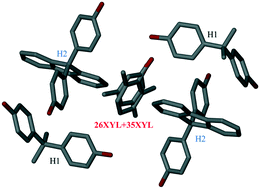
CrystEngComm, 2020,22, 7389-7398
https://doi.org/10.1039/D0CE00510J
Kryptoracemic compound hunting and frequency in the Cambridge Structural Database
Determination of kryptoracemic compound frequency in the Cambridge Structural Database using CCDC Python API script.
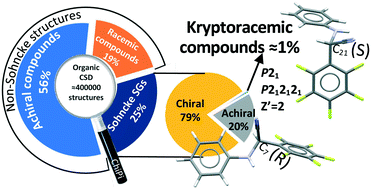
CrystEngComm, 2020,22, 7407-7419
https://doi.org/10.1039/D0CE00303D
Methods for easy recognition of isostructurality – lab jack-like crystal structures of halogenated 2-phenylbenzimidazoles
Easy recognition and numerical description of isostructurality; how different the similar structures can be; supramolecular aspects of isostructurality.
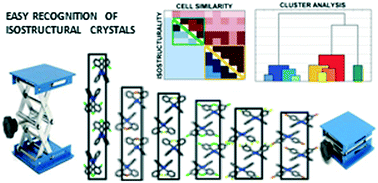
CrystEngComm, 2020,22, 7193-7203
https://doi.org/10.1039/D0CE00410C
Pseudosymmetric layers in high-Z′ and P1 structures of organic molecules
Layers having obvious approximate symmetry higher than that of the overall 3-D crystal are present in 20–25% of the Z′ > 4 and P1 organic structures archived in the Cambridge Structural Database. In some structures different types of layers alternate.
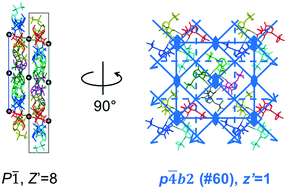
CrystEngComm, 2020,22, 7371-7379
https://doi.org/10.1039/D0CE00302F
Chirality and stereoisomerism of organic multicomponent crystals in the CSD
Multicomponent crystals in the CSD are classified into 49 subclasses based on chirality and residue type.

CrystEngComm, 2020,22, 7380-7388
https://doi.org/10.1039/D0CE00403K
Mining the Cambridge Database for theoretical chemistry. Mi-LJC: a new set of Lennard-Jones–Coulomb atom–atom potentials for the computer simulation of organic condensed matter
A novel, universal Lennard-Jones–Coulomb (LJC) atom–atom force field parametrization reproduces the experimental sublimation enthalpies of 377 molecular crystals drawn from the CSD.

CrystEngComm, 2020,22, 7350-7360
https://doi.org/10.1039/D0CE00334D
Structural similarity in chiral-achiral multi-component crystals
Understanding the structural similarities between co-crystals formed with racemic mixture and enantiopure chiral components with an achiral co-former.
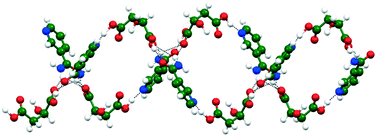
CrystEngComm, 2020,22, 7334-7340
https://doi.org/10.1039/D0CE00301H
Peculiarities of Br⋯Br bonding in crystal structures of polybromides and bromine solvates
Analysis of supramolecular associates formed by Br⋯Br interactions in crystals of 204 polybromide and bromine-containing compounds has been carried out.

CrystEngComm, 2020,22, 7361-7370
https://doi.org/10.1039/D0CE00288G
The CSD and knowledge databases: from answers to questions
We develop tools for extracting new information on crystal structures from crystallographic databases and show how to use these tools in the design of coordination compounds.
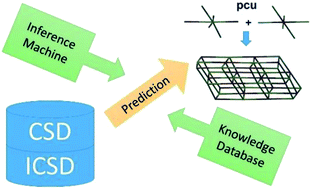
CrystEngComm, 2020,22, 7298-7307
https://doi.org/10.1039/D0CE00265H
The remarkable propensity for the formation of C–H⋯π(chelate ring) interactions in the crystals of the first-row transition metal dithiocarbamates and the supramolecular architectures they sustain
C–H⋯π(chelate ring) interactions play an important role in assembling first-row transition metal dithiocarbamates in their crystals.
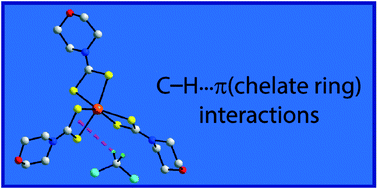
CrystEngComm, 2020,22, 7308-7333
https://doi.org/10.1039/D0CE00289E
Charge assisted halogen and pnictogen bonds: insights from the Cambridge Structural Database and DFT calculations
This manuscript combines a search in the Cambridge Structural Database and DFT calculations to analyse the existence and importance of charge assisted pnictogen and halogen bonds in halophosphonium salts.
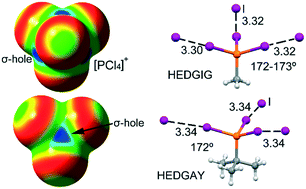
CrystEngComm, 2020,22, 7162-7169
https://doi.org/10.1039/D0CE00220H
Systematic coformer contribution to cocrystal stabilization: energy and packing trends
CSD data mining and energy calculations show that coformer self-interactions might significantly contribute to the packing energy stabilization of cocrystals.
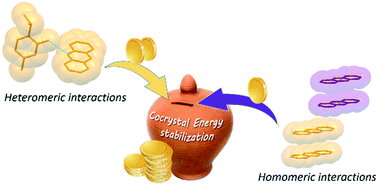
CrystEngComm, 2020,22, 7341-7349
https://doi.org/10.1039/D0CE00291G
A peculiar dehydration and solid–solid phase transition of the active pharmaceutical ingredient AZD9898 based on in situ single crystal-to-single crystal transformations
Isostructural dehydration from form A hydrate to form B, and solid–solid phase transition from form B to C of AZD9898 were revealed by in situ single crystal-to-single crystal transformations.
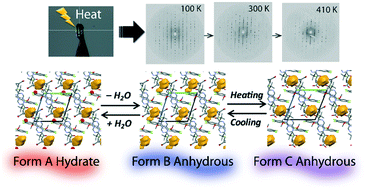
CrystEngComm, 2020,22, 7280-7289
https://doi.org/10.1039/D0CE00276C
Data mining the Cambridge Structural Database for hydrate–anhydrate pairs with SMILES strings
A search method based on SMILES string matching was developed to identify hydrate–anhydrate structure pairs in the Cambridge Structure Database.
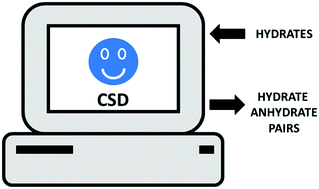
CrystEngComm, 2020,22, 7290-7297
https://doi.org/10.1039/D0CE00273A
Structural origin of physicochemical properties differences upon dehydration and polymorphic transformation of ciprofloxacin hydrochloride revealed by structure determination from powder X-ray diffraction data
Crystallochemical study of three phases of ciprofloxacin hydrochloride reveals the mechanisms of dehydration, polymorphic transformation, and differences in physicochemical properties.

CrystEngComm, 2020,22, 7272-7279
https://doi.org/10.1039/D0CE00261E
Increasing the performance, trustworthiness and practical value of machine learning models: a case study predicting hydrogen bond network dimensionalities from molecular diagrams
The value of a hydrogen bond network prediction model was improved using a tool to increase prediction trust. Its accuracy could be improved up to 73% or 89% with the compromise that only 34% and 8% of the test examples could be predicted.

CrystEngComm, 2020,22, 7186-7192
https://doi.org/10.1039/D0CE00111B
What is the preferred geometry of sulfur–disulfide interactions?
Combined crystallographic and quantum chemical studies showed that in most cases, in crystal structures, interactions between sulphur atoms and disulphide bonds are bifurcated.
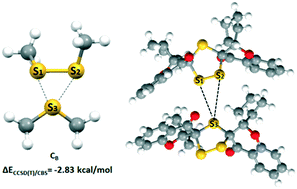
CrystEngComm, 2020,22, 7262-7271
https://doi.org/10.1039/D0CE00211A
Toward crystalline porosity estimators for porous molecules
Our data-mining of crystalline molecular materials reveals the correlations between the molecular and crystalline porosity.
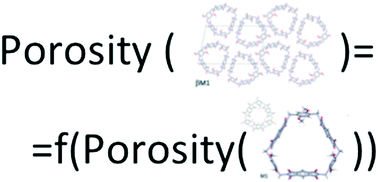
CrystEngComm, 2020,22, 7242-7251
https://doi.org/10.1039/C9CE01753D
The impact of the Cambridge Structural Database and the small molecule crystal structures it contains: a bibliographic and literature study
A bibliographic and literature-based analysis of the impact of the Cambridge Structural Database (CSD) and the papers associated with crystal structures in the CSD has been undertaken.
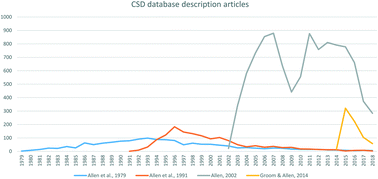
CrystEngComm, 2020,22, 7233-7241
https://doi.org/10.1039/D0CE00045K
Chirality-dependent supramolecular synthons based on the 1,3-oxazolidin-2-one framework: chiral drugs mephenoxalone, metaxalone and 114 other examples
Analysis of the 119 crystal structures of 1,3-oxazolidin-2-one derivatives, including the chiral muscle relaxants mephenoxalone and metaxalone, showed that cyclic motifs dominate in racemic, and linear in single-enantiomeric, samples.
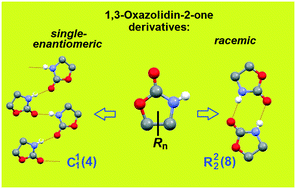
CrystEngComm, 2020,22, 7252-7261
https://doi.org/10.1039/D0CE00116C
Is it usual to be unusual? An investigation into molecular conformations in organic crystals
Molecular conformations can influence the structure and properties of crystalline solids.
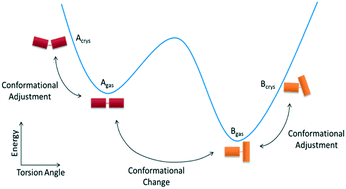
CrystEngComm, 2020,22, 7217-7228
https://doi.org/10.1039/C9CE02001B
The transition from 4f to 5d elements from the structural point of view
How structural properties reflect the transition from lanthanides to transition metals.
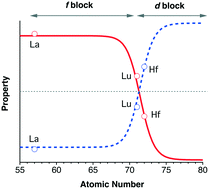
CrystEngComm, 2020,22, 7229-7232
https://doi.org/10.1039/D0CE00029A
Supramolecular organisation of sulphate salt hydrates exemplified with brucine sulphate
The frequency of hydrate formation among organic sulphate salts is unravelled. Interconversion of the hydrates of brucine sulphate occurs with small changes in the relative humidity.
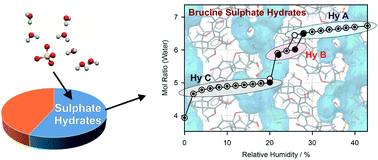
CrystEngComm, 2020,22, 7204-7216
https://doi.org/10.1039/C9CE01762C
About this collection
This themed issue of CrystEngComm combines 33 articles which highlight some of the many applications of the CSD in celebration of the one millionth crystal structure, a significant community achievement in 2019. Throughout this issue, the research carried out by the authors demonstrates the breadth of information and the variety of applications arising from the data in the CSD. Over the last half a century the complexity and size of structures have expanded, and the techniques and instrumentation used to determine new structures have evolved considerably. The articles herein show how far the field has evolved.